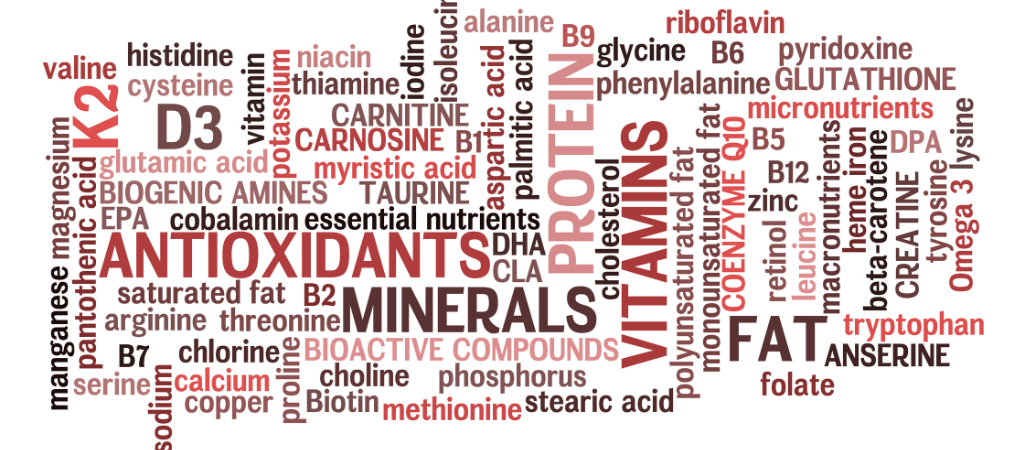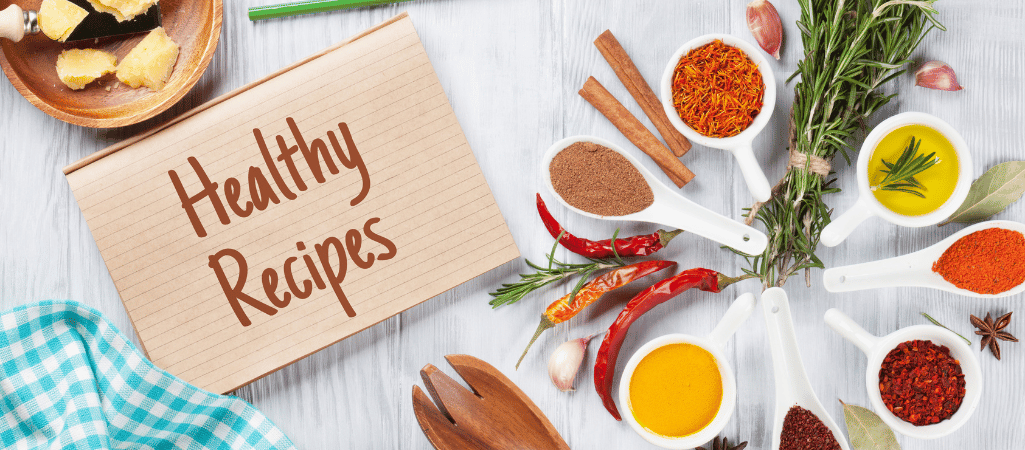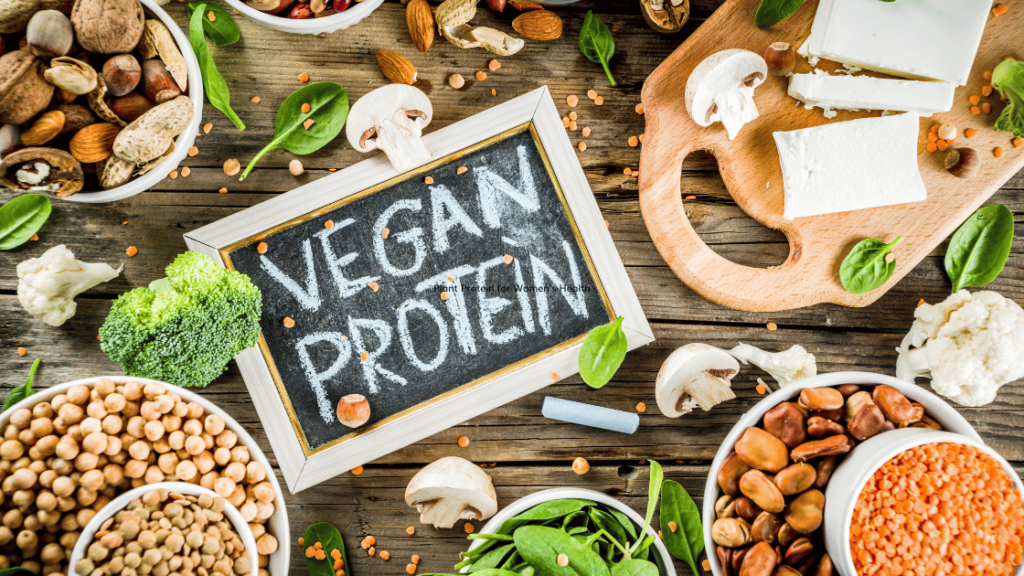Healthy Eating Tips for Weight Loss

Healthy eating is a crucial part of any fitness plan, helping people reach their weight loss and wellness goals. In this article, we’ll discuss why healthy eating is so important for sustainable weight loss and overall well-being. We’ll also share practical tips and strategies to help you make healthier food choices.
Here’s what you’ll learn in this article:
- The impact of healthy eating on weight management
- How to create a balanced meal plan for weight loss
- Tips for adopting and sticking to a healthy eating routine
- Delicious recipes that support your weight loss efforts
By incorporating these ideas into your daily life, you can not only lose weight but also feel more energetic, happier, and healthier. Ready to get started on your journey to better health? Let’s dive in!
The Role of Healthy Eating in Weight Loss
Healthy eating plays a crucial role in achieving and maintaining weight loss. By focusing on nutritious, whole foods, you can create a calorie deficit, boost metabolism, and reduce cravings, all of which are essential for successful weight management.
Impact of Diet on Weight Loss
The saying “you are what you eat” holds true when it comes to weight loss. The food you consume directly impacts your body composition and overall health. By making mindful choices about the quality and quantity of your food intake, you can effectively support your weight loss journey.
Creating a Calorie Deficit
- Healthy eating involves consuming foods that are nutritionally dense and lower in calories. This approach naturally helps in creating a calorie deficit, where the calories burned exceed those consumed. This deficit is key to shedding excess weight and reducing body fat.
Boosting Metabolism
- Certain foods can rev up your metabolism, leading to more efficient calorie burning. For example, protein-rich foods require more energy for digestion and absorption, thus increasing the number of calories burned during the process. Incorporating metabolism-boosting foods into your diet can support your weight loss efforts.
Reducing Cravings
- A nutrient-dense diet that includes a balance of macronutrients can help stabilize blood sugar levels and keep cravings at bay. When you nourish your body with wholesome foods, you are less likely to experience intense hunger pangs or cravings for unhealthy snacks or sweets.
By understanding the impact of healthy eating on weight loss, you can make informed choices that align with your fitness goals.
Understanding Macronutrients for Weight Loss
Macronutrients are the essential components of your diet that provide energy and support various bodily functions. The three primary macronutrients are carbohydrates, proteins, and fats. Each macronutrient plays a specific role in the body and understanding how to balance them is crucial for sustainable weight loss.

Carbohydrates
Carbs are the body’s primary source of energy. They are broken down into glucose, which fuels your brain and muscles. However, not all carbohydrates are created equal:
- Simple carbohydrates, found in sugary snacks and refined grains, can cause rapid spikes and drops in blood sugar levels, leading to increased hunger and cravings.
- On the other hand, complex carbohydrates, such as whole grains, fruits, and vegetables, provide a steady release of energy and essential nutrients.
Proteins
Proteins are vital for building and repairing tissues, including muscle tissue. They also play a key role in regulating metabolism and promoting feelings of fullness. Incorporating lean sources of protein into your meals can help you feel satisfied while preserving muscle mass during weight loss.
Fats
Despite their bad reputation, healthy fats are an important part of a well-rounded diet. They aid in nutrient absorption, protect vital organs, and provide long-lasting energy. Opt for sources of unsaturated fats like avocados, nuts, seeds, and olive oil to support heart health and overall well-being.
Balancing these macronutrients is essential for optimizing your body’s functions and supporting your weight loss goals. By prioritizing high-quality sources of each macronutrient and moderating portion sizes accordingly, you can create a nutritionally balanced meal plan that promotes sustainable weight loss while meeting your body’s needs for energy and essential nutrients.
Creating a Well-Balanced Meal Plan for Weight Loss
When it comes to weight loss, creating a well-balanced meal plan is essential. This will not only help you achieve your weight loss goals but also ensure that you are providing your body with the necessary nutrients for optimal health. In this section, we will discuss the importance of setting realistic calorie goals and guide you on determining your daily calorie needs for healthy and sustainable weight loss.
Setting Realistic Calorie Goals
To lose weight, it is important to create a calorie deficit. A calorie deficit occurs when you consume fewer calories than your body needs to maintain its current weight. This prompts your body to tap into its stored fat reserves for energy, leading to weight loss over time.
However, it’s crucial to set realistic calorie goals that align with your individual needs and lifestyle. Setting excessively low calorie goals can be unsustainable and may even lead to nutrient deficiencies or metabolic slowdown. On the other hand, setting too high of a calorie goal may slow down your weight loss progress.
To determine your daily calorie needs for weight loss, consider the following factors:
- Basal Metabolic Rate (BMR): Your BMR represents the number of calories your body needs to perform basic functions at rest. Several online calculators can help you estimate your BMR based on factors like age, gender, height, and weight.
- Physical Activity Level: Take into account how active you are throughout the day and adjust your calorie goal accordingly. If you have an active job or engage in regular exercise, you may need more calories than someone with a sedentary lifestyle.
- Weight Loss Rate: Consider how quickly you want to lose weight. Generally, a safe and sustainable rate of weight loss is around 0.5-1 pound per week. To achieve this, aim for a daily calorie deficit of 500-1000 calories.
Once you have determined your calorie goal, it’s important to distribute those calories across your meals and snacks throughout the day.
Prioritizing Lean Proteins and Fiber-Rich Foods
When creating a well-balanced meal plan for weight loss, it’s essential to prioritize lean proteins and fiber-rich foods. These food groups are not only nutrient-dense but also help promote satiety, boost metabolism, and regulate blood sugar levels.
- Lean Proteins: Skinless chicken or turkey breast, fish, tofu, tempeh, legumes (such as lentils and chickpeas), Greek yogurt, cottage cheese, and eggs.
- Fiber-Rich Foods: Whole grains (such as quinoa, brown rice, and oats), fruits (like berries and apples), vegetables (especially leafy greens and cruciferous vegetables), nuts, seeds, and beans.
Incorporating these foods into your meals can help you stay full for longer periods and prevent overeating. For example, you could have a grilled chicken salad with mixed greens, cherry tomatoes, cucumbers, and a sprinkle of olive oil as a satisfying lunch option.

Incorporating Healthy Fats in Moderation
Contrary to popular belief, fats are an important part of a well-balanced meal plan for weight loss. However, it is crucial to choose healthy fats in moderation. Healthy fats provide essential fatty acids that support brain function, hormone production, and nutrient absorption. They also help keep you feeling satisfied after meals.
Some sources of healthy fats include:
- Avocados
- Olive oil
- Nuts and seeds
- Fatty fish (such as salmon and mackerel)
- Nut butter (like almond or peanut butter)
While incorporating these fats into your meals can be beneficial, it’s important to be mindful of portion sizes. Healthy fats are still calorie-dense, so aim to include them in moderation.
Including a Variety of Colorful Fruits and Vegetables
No well-balanced meal plan for weight loss is complete without a variety of colorful fruits and vegetables. These foods are low in calories but rich in essential vitamins, minerals, and antioxidants. They also provide dietary fiber, which aids digestion and helps you feel satisfied.
To incorporate more fruits and vegetables into your meal plan, consider the following tips:
- Choose a variety of colors: Different colored fruits and vegetables offer different nutrients, so aim to include a rainbow of options in your meals.
- Experiment with cooking methods: Try roasting, grilling, or sautéing your vegetables to enhance their flavor and texture.
- Sneak them into recipes: Add chopped vegetables to soups, stews, omelets, or stir-fries for an extra nutritional boost.
- Enjoy fruits as snacks: Keep a bowl of fresh fruit on your kitchen counter or pack pre-cut fruit for a convenient on-the-go snack.
By including plenty of colorful produce in your meal plan, you’ll not only support your weight loss goals but also improve your overall health.
Prioritizing Lean Proteins and Fiber-Rich Foods
When you’re planning your meals to lose weight, it’s important to choose foods that not only help you reach your calorie goals but also keep you feeling full and satisfied. This is where lean proteins and fiber-rich foods come in handy.
Why Lean Proteins and Fiber-Rich Foods are Important for Weight Loss
- Lean proteins: Foods like chicken, turkey, fish, tofu, and legumes are rich in protein and low in fat. They can help you feel full for longer periods of time, which can prevent overeating and snacking.
- Fiber-rich foods: Fruits, vegetables, whole grains, and seeds are all good sources of fiber. Fiber adds bulk to your meals without adding extra calories, making you feel more satisfied after eating.
How Lean Proteins and Fiber-Rich Foods Can Help with Weight Loss
- Promote Satiety: Lean proteins and fiber-rich foods take longer to digest than other types of food. This means they stay in your stomach for longer, keeping you feeling full and reducing the urge to eat more.
- Boost Metabolism: Protein has a higher thermic effect than fats or carbs, which means your body burns more calories while digesting it. Plus, fiber helps regulate digestion and can contribute to a healthy metabolism.
Examples of Lean Proteins and Fiber-Rich Foods
Here are some ideas for incorporating these foods into your meals:
- Lean Proteins: Grilled chicken breast, baked fish, lentils, quinoa, Greek yogurt
- Fiber-Rich Foods: Broccoli, berries, oats, sweet potatoes, chia seeds
Creative Ways to Include Lean Proteins and Fiber-Rich Foods in Your Meals
Try these suggestions for adding variety to your meals while still getting the benefits of lean proteins and fiber:
- Make colorful salads with a mix of vegetables and lean protein sources.
- Blend fruits into smoothies and add in fiber-rich seeds like flax or chia.
- Create satisfying grain bowls with a combination of whole grains and lean protein options.
By making these foods a priority in your meal plan, you can improve the nutritional value of your diet while also supporting your weight loss goals.
Incorporating Healthy Fats in Moderation
When it comes to weight loss, incorporating healthy fats in moderation is essential for a well-rounded meal plan. Healthy fats play a crucial role in a balanced diet and can positively impact weight management. Here’s how you can effectively include healthy fats in your meals:
1. Understanding the Role of Healthy Fats
Healthy fats, such as those found in avocados, nuts, seeds, and olive oil, are vital for supporting overall health and aiding in the absorption of essential nutrients. They also contribute to a feeling of fullness and satisfaction after meals, which can help prevent overeating.
2. Portion Control
While healthy fats offer numerous benefits, it’s important to consume them in moderation, especially when focusing on weight loss. Be mindful of portion sizes to ensure you’re not inadvertently consuming excess calories.
3. Sources of Healthy Fats
Incorporate sources of healthy fats into your meals by:
- Adding a handful of nuts or seeds to your morning oatmeal or yogurt.
- Using avocado as a creamy addition to smoothies or as a topping for whole-grain toast.
- Drizzling olive oil over roasted vegetables or using it as a base for homemade salad dressings.
By being intentional about including healthy fats in your meal plan, you can support your weight loss goals while still enjoying flavorful and satisfying foods.
Including a Variety of Colorful Fruits and Vegetables
A well-balanced meal plan for weight loss should always include a variety of colorful fruits and vegetables. These nutrient-packed foods not only provide essential vitamins, minerals, and antioxidants but are also low in calories, making them a perfect addition to any weight loss journey.
Here are some key points to consider when incorporating fruits and vegetables into your meal plan:
- Highlight the importance of fruits and vegetables: Fruits and vegetables are rich in fiber, which helps promote feelings of fullness and aids in weight management. They also contain essential nutrients that support overall health and well-being.
- Encourage readers to try different types of produce: Variety is key when it comes to fruits and vegetables. Encourage readers to experiment with different colors, textures, and flavors. Incorporating a mix of leafy greens, vibrant berries, crunchy peppers, and sweet citrus fruits ensures a wide range of nutrients in your diet.
- Offer serving suggestions: To make it easier for readers to incorporate fruits and vegetables into their meals, provide some serving suggestions:
- Breakfast: Add sliced bananas or berries to your morning oatmeal or yogurt.
- Lunch or dinner: Include a side salad with your main meal.
- Snacks: Enjoy carrot sticks with hummus as a healthy snack option.
Remember that portion control is essential even when it comes to healthy foods. While fruits and vegetables are nutritious, consuming them in excessive amounts can hinder weight loss progress due to their natural sugar content. Aim for a balance and moderation in your meal plan.
By including a variety of colorful fruits and vegetables in your meal plan, you not only enhance the nutritional value of your diet but also add flavor, texture, and visual appeal to your meals. So don’t be afraid to get creative and explore the abundance of options available!
Practical Tips for Implementing Your Weight Loss Meal Plan
Implementing a weight loss meal plan can be challenging, especially when faced with everyday temptations and busy schedules. However, with the right strategies and mindset, you can successfully stick to your plan and overcome common challenges. Here are some practical tips to help you on your weight loss journey:
1. Plan and Prep Ahead
Set aside some time each week to plan your meals and snacks. This will help you stay organized and make healthier choices. Consider prepping ingredients in advance or cooking meals in bulk to save time during the week.
2. Keep Healthy Foods Easily Accessible
Make sure your kitchen is stocked with nutritious foods that align with your weight loss goals. Keep fruits, vegetables, lean proteins, and whole grains within easy reach. When healthy options are readily available, you’ll be less likely to reach for unhealthy alternatives.

3. Practice Portion Control
Be mindful of portion sizes to avoid overeating. Use measuring cups or a food scale to accurately portion out your meals and snacks. Also, try using smaller plates and bowls to create the illusion of a fuller plate.
4. Listen to Your Body
Pay attention to your body’s hunger and fullness cues. Eat slowly and stop eating when you feel comfortably satisfied, rather than stuffed. This will help prevent overeating and promote mindful eating habits.
5. Stay Hydrated
Drinking an adequate amount of water throughout the day can help reduce cravings and keep you feeling fuller for longer. Aim for at least 8 glasses of water per day and consider incorporating herbal teas or infused water for added flavor.
6. Find Healthy Swaps
Look for healthier alternatives to your favorite dishes and snacks. For example, opt for air-popped popcorn instead of potato chips, or try zucchini noodles instead of traditional pasta. Experimenting with new recipes and ingredients can make healthy eating more exciting and enjoyable.
7. Practice Mindful Eating
Avoid distractions while eating, such as watching TV or using electronic devices. Instead, focus on the flavors, textures, and sensations of your food. Mindful eating can help you savor your meals and prevent mindless overeating.
8. Stay Accountable
Keep a food journal or use a mobile app to track your meals and snacks. This can help you stay accountable and identify any patterns or triggers that may hinder your progress. Additionally, consider sharing your journey with a friend or joining a support group for added motivation.
Remember, implementing a weight loss meal plan is a journey, and it’s important to be patient with yourself. Focus on progress rather than perfection, and celebrate small victories along the way. By incorporating these practical tips into your daily routine, you’ll be well on your way to achieving your weight loss goals.
Healthy and Delicious Recipes for Weight Loss
When it comes to weight loss, healthy eating doesn’t have to be bland or boring. In fact, there are plenty of delicious recipes that can help you shed those extra pounds while still satisfying your taste buds. Here are some easy-to-make recipes that are both nutritious and satisfying, perfect for breakfast, lunch, dinner, and snacks:

Breakfast:
- Greek Yogurt Parfait: Layer Greek yogurt with fresh berries, nuts, and a drizzle of honey for a protein-packed and antioxidant-rich breakfast.
- Vegetable Omelette: Beat together eggs with chopped vegetables like spinach, bell peppers, and tomatoes. Cook in a non-stick pan until fluffy and golden brown.
Lunch:
- Quinoa Salad: Combine cooked quinoa with diced cucumbers, cherry tomatoes, feta cheese, and a lemon-herb dressing for a refreshing and filling lunch option.
- Grilled Chicken Wrap: Fill a whole wheat tortilla with grilled chicken breast slices, mixed greens, sliced avocado, and a dollop of Greek yogurt as a healthier alternative to mayo.
Dinner:
- Baked Salmon: Season salmon fillets with lemon juice, garlic powder, and dill. Bake in the oven until tender and serve with steamed vegetables for a nutritious dinner.
- Turkey Chili: Cook ground turkey with onions, bell peppers, tomatoes, kidney beans, and chili powder for a flavorful and low-fat chili option.
Snacks:
- Roasted Chickpeas: Toss chickpeas with olive oil and spices like paprika or cumin. Roast in the oven until crispy for a crunchy and protein-rich snack.
- Homemade Trail Mix: Mix together unsalted nuts, dried fruits like cranberries or apricots, and dark chocolate chips for a sweet and satisfying snack on the go.
These recipes not only provide a balance of macronutrients but are also packed with vitamins, minerals, and antioxidants. They can help fuel your body, keep you full, and support your weight loss goals. Remember to portion control and listen to your body’s hunger cues while enjoying these delicious meals.
Note: These recipes are just a starting point, feel free to get creative and adjust ingredients based on your personal preferences and dietary needs.
By incorporating these healthy and delicious recipes into your meal plan, you can enjoy flavorful dishes while still making progress towards your weight loss goals. Experiment with different flavors and combinations to find what works best for you. Bon appétit!
Eating Out and Socializing While on a Weight Loss Journey
When you’re trying to lose weight, it’s important to find a way to enjoy social occasions while staying on track with your goals. Here are some tips to help you navigate eating out and socializing without derailing your progress:
Plan ahead
Before going out to eat, take a look at the menu online if possible. Look for healthier options or dishes that can be modified to fit your dietary needs. Planning ahead gives you an opportunity to make informed choices and avoid impulse decisions.
Choose wisely
- Opt for dishes that are grilled, steamed, or roasted instead of fried or breaded.
- Look for lean protein sources like chicken, fish, or tofu.
- Choose dishes that incorporate plenty of vegetables.
- Avoid heavy sauces or dressings and ask for them on the side so you can control the amount.
Control portions
Restaurant servings are often larger than what we need. Here are some strategies to control your portions:
- Consider sharing a dish with a friend.
- Ask for a takeout container at the beginning of the meal and pack up half of your meal to enjoy later.
- Order an appetizer or choose from the appetizer menu as they tend to be smaller portions.
Be mindful of beverages
Many drinks, especially alcoholic ones, can be high in calories and sugar. Here are some healthier options:
- Opt for water, unsweetened tea, or sparkling water instead of sugary sodas or cocktails.
- If you do choose to have an alcoholic beverage, stick to light options like vodka soda or wine spritzers.
Ask for substitutions
Don’t be afraid to ask for substitutions or modifications to suit your dietary needs. For example:
- Swap fries for a side salad or steamed vegetables.
- Request whole wheat bread instead of white bread for sandwiches.
- Most restaurants are willing to accommodate requests within reason.
Focus on socializing
Remember that the main purpose of social events is to connect with others, not just to eat. Shift your focus from the food to the company and conversation. Engage in activities or games that don’t revolve around eating, such as going for a walk or playing a sport.
Practice mindful eating
Pay attention to your body’s hunger and fullness cues. Eat slowly, savoring each bite, and stop when you feel satisfied, not overly full. Be mindful of your portions and listen to your body’s signals.
Remember, it’s okay to indulge occasionally and enjoy your favorite treats in moderation. The key is finding a balance between healthy choices and occasional indulgences. By making mindful decisions and staying committed to your goals, you can navigate eating out and socializing while still making progress on your weight loss journey.
Staying Motivated for Long-Term Success
Staying motivated on your weight loss journey is crucial for long-term success. It can be challenging at times, but with the right strategies and mindset, you can overcome obstacles and stay on track. Here are some practical tips to help you stay motivated:
1. Set Realistic Goals
Set achievable and realistic goals that align with your overall health and well-being. Break your larger goal into smaller milestones to keep yourself motivated along the way.
2. Track Your Progress
Keep a record of your progress, such as tracking your weight loss, measurements, or fitness achievements. Seeing your progress can be incredibly motivating and provide a sense of accomplishment.
3. Celebrate Non-Scale Victories
Remember that weight loss isn’t just about the number on the scale. Celebrate non-scale victories like increased energy levels, improved sleep quality, or fitting into smaller clothing sizes. These accomplishments are just as important as the numbers.
4. Find an Accountability Partner
Having someone to share your journey with can provide support and motivation. Find a friend or family member who has similar goals or consider joining a weight loss support group.

5. Reward Yourself
Treat yourself to non-food rewards when you reach milestones or achieve your goals. It could be buying new workout clothes, getting a massage, or enjoying a relaxing day at the spa.
6. Keep a Positive Mindset
Surround yourself with positive influences and affirmations. Practice self-compassion and avoid negative self-talk. Remember that setbacks are normal and part of the journey.
7. Try New Activities
Keep your fitness routine exciting by trying new activities or exercises that you enjoy. This can help prevent boredom and keep you motivated to stay active.
8. Visualize Your Success
Take some time each day to visualize yourself achieving your weight loss goals. Imagine how it will feel to reach your desired weight and live a healthier, more fulfilling life.
9. Stay Educated
Continuously educate yourself about nutrition, exercise, and overall wellness. Learning new information can keep you engaged and motivated to make healthier choices.
10. Find Inspiration
Seek inspiration from success stories of others who have achieved their weight loss goals. Join online communities or follow social media accounts that share motivational stories and tips.
Remember, staying motivated is a journey in itself. It’s normal to have ups and downs, but by implementing these strategies and finding what works best for you, you can stay motivated on your weight loss journey for the long term. Keep pushing forward and believe in yourself!
The Importance of Regular Physical Activity
Physical activity is really important for managing your weight and staying healthy. When you exercise regularly and eat a balanced diet, it can help you lose weight and keep it off. Here’s why it’s so important to include physical activity in your daily routine:
Why Physical Activity Is Important for Weight Management
- Calorie Expenditure: Doing activities like cardio workouts, strength training, or high-intensity interval training (HIIT) helps you burn calories. This is important because to lose weight, you need to create a calorie deficit, which means burning more calories than you consume.
- Metabolism Boost: Exercise can speed up your metabolism, which is how your body turns food into energy. When your metabolism is faster, you burn more calories even when you’re not exercising. This can help with weight loss by helping you burn fat and keep muscle.
- Improved Well-being: Regular physical activity not only helps with weight management but also has other benefits for your overall well-being. It can reduce stress, improve your mood, and give you more energy, which are all important for staying motivated on your weight loss journey.
Types of Exercises for Weight Loss and Health
To get the most benefits from exercise, it’s good to do a variety of different types of exercises:
- Cardiovascular exercises: These are activities that get your heart rate up and make you breathe harder. Examples include walking, running, cycling, swimming, or dancing.
- Strength training: This involves using weights or resistance bands to build strength and tone your muscles. You can do exercises like lifting weights, doing push-ups or squats, or using weight machines at the gym.
- Flexibility exercises: These help improve your flexibility and range of motion in your joints. Stretching exercises or yoga are good options for improving flexibility.
Tips for Making Exercise a Habit
To make exercise a regular part of your life, try these tips:
- Find activities you enjoy: Choose exercises that you actually like doing, so it doesn’t feel like a chore. This could be anything from playing a sport to taking dance classes or going for hikes.
- Set realistic goals: Start with small, achievable goals and gradually increase the intensity or duration of your workouts. This can help you stay motivated and avoid getting discouraged.
- Make it social: Exercise with friends or join group classes to make it more fun and keep each other accountable.
- Schedule it in: Treat exercise like any other important appointment and block off time for it in your daily schedule.
- Be consistent: Aim for at least 150 minutes of moderate-intensity exercise or 75 minutes of vigorous-intensity exercise per week, spread out over several days.
Remember, the key is to find activities that you enjoy and that fit into your lifestyle. By making exercise a regular habit, you’ll not only see improvements in your weight but also experience the many other benefits of being physically active.
Seeking Professional Guidance When Needed
When it comes to weight loss, seeking professional guidance can be a crucial step towards achieving your goals in a safe and effective manner. Consulting with a healthcare professional or registered dietitian before making any drastic changes to your diet or embarking on a weight loss program is highly recommended. Here’s why:
- Personalized approach: Every individual is unique, and what works for one person may not work for another. A healthcare professional or registered dietitian can assess your specific needs, medical history, and dietary preferences to tailor a weight loss plan that suits you best.
- Expert knowledge: Professionals in the field of nutrition and weight management have extensive knowledge and experience in understanding the complexities of the human body and its response to different foods. They can provide evidence-based recommendations and help you navigate through misleading information or fad diets.
- Monitoring progress: Regular check-ins with a professional can help you stay accountable and track your progress effectively. They can provide guidance on adjusting your meal plan, caloric intake, or exercise routine based on your results and individual circumstances.
- Identifying underlying issues: Sometimes, weight gain or difficulty losing weight can be attributed to underlying health conditions or lifestyle factors that require attention. A healthcare professional or registered dietitian can help identify these issues and provide appropriate recommendations for addressing them.
- Long-term success: Weight loss is not just about shedding pounds; it’s about establishing healthy habits that you can maintain for life. Seeking professional guidance ensures that you develop sustainable strategies for long-term success, rather than relying on quick fixes or restrictive diets.
Remember, while seeking professional guidance is valuable, it’s essential to find a qualified and reputable healthcare professional or registered dietitian who aligns with your goals and values. Their expertise will complement your efforts towards healthy eating and weight loss, giving you the best chance of achieving lasting results.
Conclusion
- As you embark on your journey towards a healthier lifestyle through mindful eating and nourishment, remember that every small step counts.
- By prioritizing nutrient-dense foods and making conscious choices, you are taking significant strides towards achieving your weight loss goals.
Take a moment to reflect on the practical tips and strategies shared in this article. You have the power to transform your relationship with food and embrace a sustainable approach to weight loss through healthy eating. Start implementing these insights into your daily routine, and witness the positive impact it has on your overall well-being. Your commitment to wholesome nutrition is a powerful investment in your health and vitality. Let’s take the first step towards a healthier, happier you!







